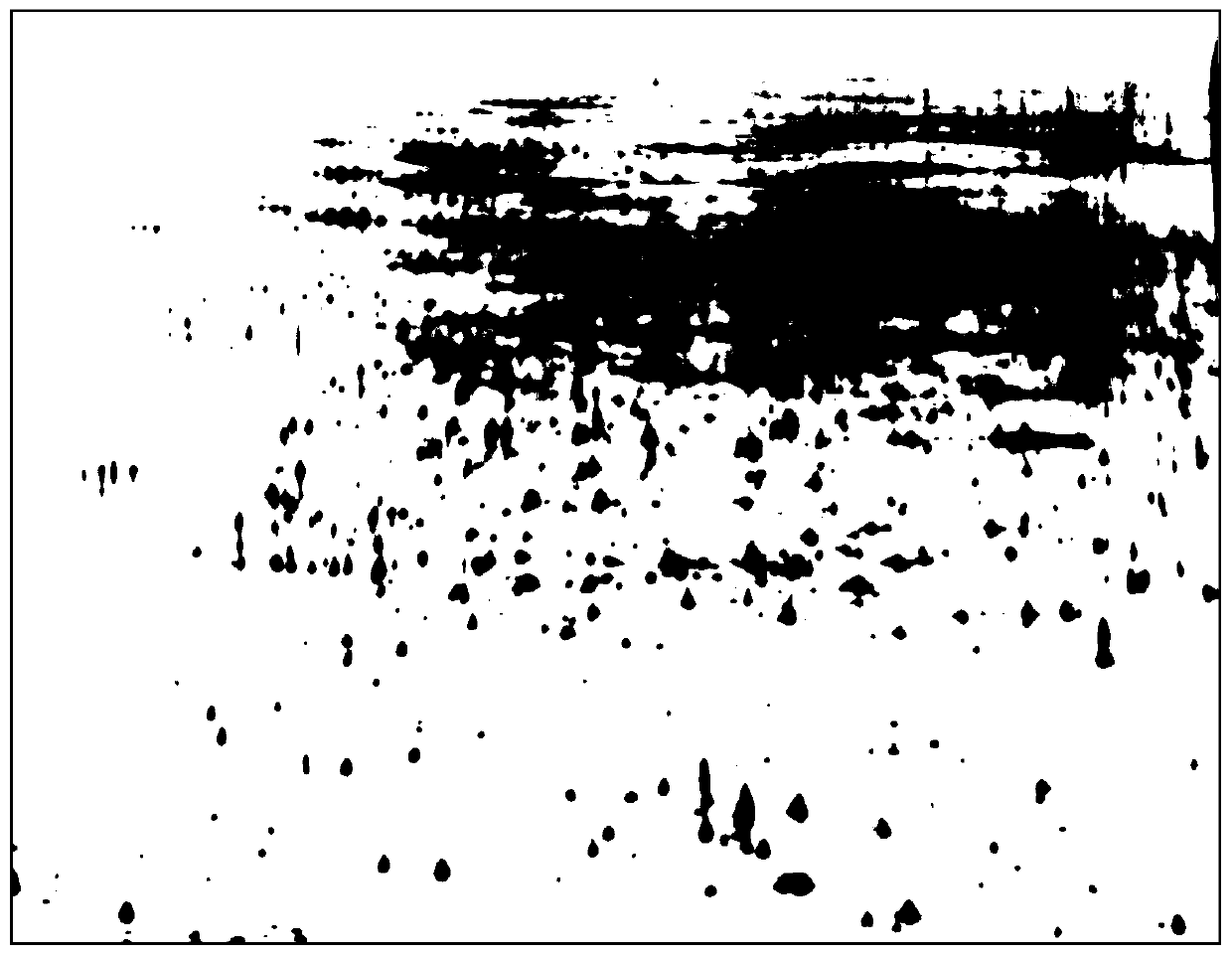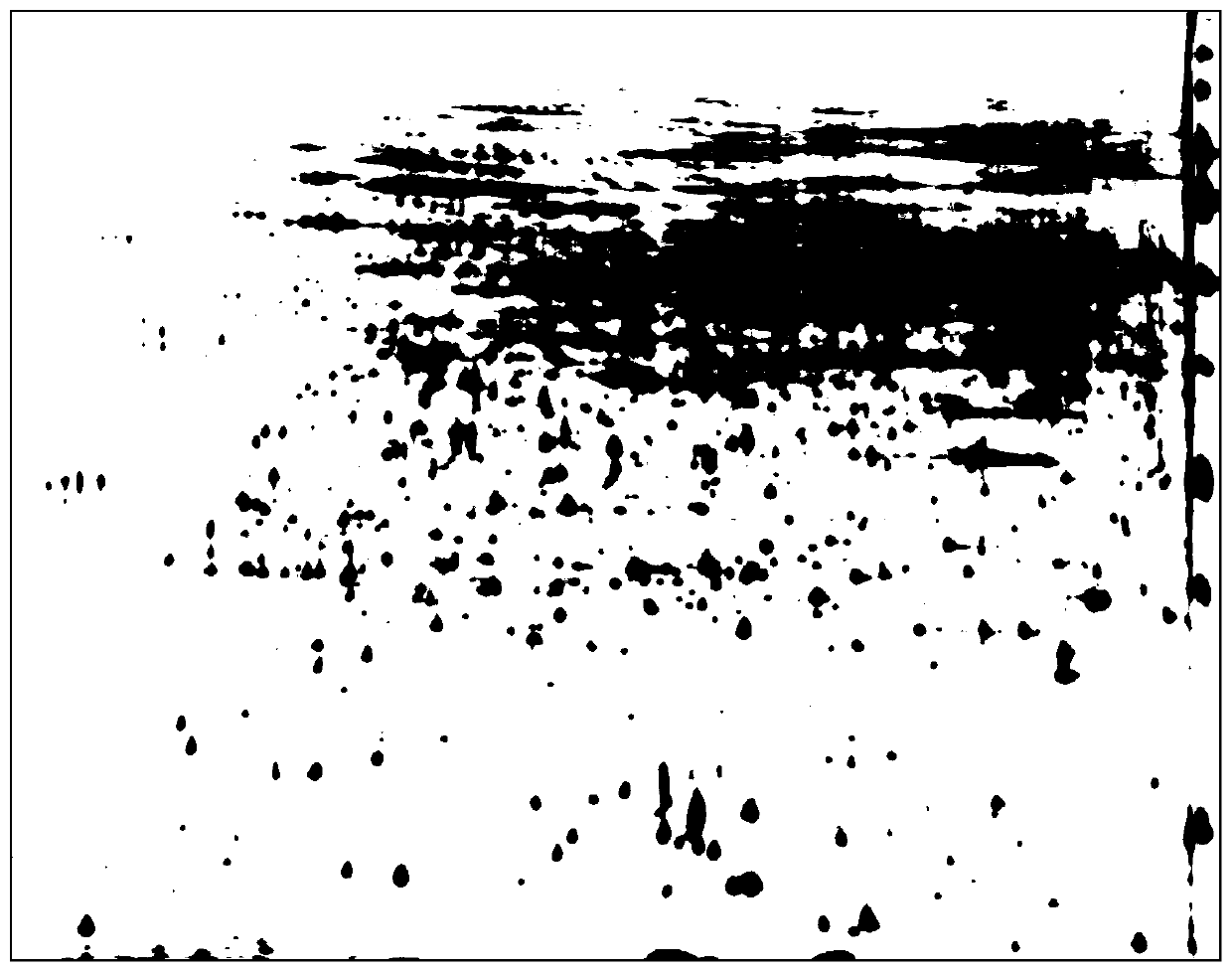Efficient extraction method for proteins in tea leaves
An extraction method and protein technology, applied in the field of protein extraction, can solve the problems of poor effect, limited tea proteomics research, and influence on protein extraction and separation of tea leaves, achieving low extraction efficiency, good separation effect, and clear protein spots. Effect
- Summary
- Abstract
- Description
- Claims
- Application Information
AI Technical Summary
Problems solved by technology
Method used
Image
Examples
Embodiment 1
[0029] A kind of efficient tea tree leaf protein extraction method
[0030] Preparation of TCA / acetone mixed solution A: Acetone solution is used for preparation, wherein the content of TCA is 15%, the content of mercaptoethanol is 0.1%, and the content of acetone is 84.9%.
[0031] Preparation of TCA / acetone mixed solution B: Acetone solution is used for preparation, wherein the content of TCA is 12%, the content of mercaptoethanol is 0.08%, and the content of acetone is 87.2%.
[0032] Preparation of protein sample lysate: use sterile water to prepare, including 9.5 mol / L urea, 0.8% dithiothreitol content, 3.8% CHAPS content, and 1.8% Ampholine content with a pH value of 5-8.
[0033] 1) Preliminary grinding, extraction and standing of leaves
[0034] Take tea tree leaves (two leaves and one core), cut them into 1cm flakes with scissors and mix well, weigh 4g of tea tree leaves and put them in a mortar, add about 0.08g of PVP, add liquid nitrogen, quickly grind for 8s, add ...
Embodiment 2
[0043] A kind of efficient tea tree leaf protein extraction method
[0044] Preparation of TCA / acetone mixed solution A: Acetone solution is used for preparation, wherein the content of TCA is 15%, the content of mercaptoethanol is 0.1%, and the content of acetone is 84.9%.
[0045] Preparation of TCA / acetone mixed solution B: Acetone solution is used for preparation, wherein the content of TCA is 12%, the content of mercaptoethanol is 0.08%, and the content of acetone is 87.2%.
[0046] Preparation of protein sample lysate: use sterile water to prepare, including 9.5 mol / L urea, 0.8% dithiothreitol content, 3.8% CHAPS content, and 1.8% Ampholine content with a pH value of 5-8.
[0047] 1) Preliminary grinding, extraction and standing of leaves
[0048] Take tea tree leaves (two leaves and one core), cut them into 1cm flakes with scissors and mix well, weigh 4g of tea tree leaves and place them in a mortar, add about 0.12g of PVP, add liquid nitrogen, quickly grind for 10s, add...
Embodiment 3
[0057] A kind of efficient tea tree leaf protein extraction method
[0058] Preparation of TCA / acetone mixed solution A: Acetone solution is used for preparation, wherein the content of TCA is 15%, the content of mercaptoethanol is 0.1%, and the content of acetone is 84.9%.
[0059] Preparation of TCA / acetone mixed solution B: Acetone solution is used for preparation, wherein the content of TCA is 12%, the content of mercaptoethanol is 0.08%, and the content of acetone is 87.2%.
[0060] Preparation of protein sample lysate: use sterile water to prepare, including 9.5 mol / L urea, 0.8% dithiothreitol content, 3.8% CHAPS content, and 1.8% Ampholine content with a pH value of 5-8.
[0061] 1) Preliminary grinding, extraction and standing of leaves
[0062] Take tea tree leaves (two leaves and one core), cut them into 1.5cm flakes with scissors and mix well, weigh 5g of tea tree leaves and put them in a mortar, add about 0.12g of PVP, add liquid nitrogen, quickly grind for 10s, a...
PUM
 Login to View More
Login to View More Abstract
Description
Claims
Application Information
 Login to View More
Login to View More - R&D
- Intellectual Property
- Life Sciences
- Materials
- Tech Scout
- Unparalleled Data Quality
- Higher Quality Content
- 60% Fewer Hallucinations
Browse by: Latest US Patents, China's latest patents, Technical Efficacy Thesaurus, Application Domain, Technology Topic, Popular Technical Reports.
© 2025 PatSnap. All rights reserved.Legal|Privacy policy|Modern Slavery Act Transparency Statement|Sitemap|About US| Contact US: help@patsnap.com



